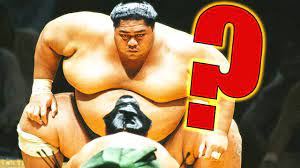Why Are Sumo Wrestlers Fat
Introduction
When we think of sumo wrestlers, the first image that comes to mind is that of robust individuals with impressively large bodies. Their size and physique are fascinating to many people around the world. But have you ever wondered why sumo wrestlers are so fat? In this article, we will delve into the reasons behind their distinctive physique and explore the unique world of sumo wrestling.
1. The Origins of Sumo Wrestling
Sumo wrestling has deep roots in Japanese culture and dates back over a thousand years. It originated as a form of entertainment and religious ritual, often performed to appease the gods. Today, sumo wrestling is a highly regarded sport in Japan and is accompanied by a rich set of traditions and rituals.
2. The Role of Weight in Sumo Wrestling
Weight plays a crucial role in sumo wrestling. Unlike other combat sports, where athletes strive to maintain a lean and muscular physique, sumo wrestlers aim to maximize their body mass. The larger the wrestler, the more power they can generate to overpower their opponents.
3. Training and Diet of Sumo Wrestlers
Sumo wrestlers undergo intense training regimens to develop their strength, agility, and endurance. Their training consists of a combination of weightlifting, cardio exercises, and extensive practice in traditional sumo techniques. However, equally important to their training is their unique diet.
Sumo wrestlers follow a specialized diet known as “chankonabe.” This high-calorie, protein-rich stew consists of various ingredients such as fish, meat, tofu, vegetables, and rice. The high caloric intake helps wrestlers gain weight and build muscle mass. They consume large quantities of food, often exceeding 5,000 calories per day.
4. The Physiology of Sumo Wrestlers
The physique of sumo wrestlers is a result of a combination of factors, including their training, diet, and genetics. Their bodies undergo remarkable transformations, with a significant amount of weight being concentrated around their midsection. This distribution of fat provides stability and balance during matches.
Additionally, sumo wrestlers develop immense leg strength through their training, allowing them to maintain a low center of gravity and resist being pushed or lifted by their opponents.
5. Cultural Significance of Sumo Wrestling
Sumo wrestling holds great cultural significance in Japan. It is not merely a sport but also a symbol of national pride and tradition. Sumo tournaments attract thousands of spectators who gather to witness the spectacle of powerful wrestlers battling it out in the ring. The sport embodies discipline, respect, and honor, and the rituals performed before matches reflect the deep-rooted cultural values.
6. The Health Implications of Sumo Wrestling
While sumo wrestling is revered as a national sport, it comes with its fair share of health implications. The intense training and excessive weight gain put tremendous strain on the wrestlers’ bodies. Sumo wrestlers often face health issues such as obesity-related conditions, joint problems, and cardiovascular risks. Nevertheless, they receive specialized medical care to mitigate these risks and maintain their well-being.
7. Challenges Faced by Sumo Wrestlers
Becoming a successful sumo wrestler requires not only physical strength but also mental fortitude. Wrestlers face grueling training schedules, strict lifestyle regulations, and the pressure to uphold the traditions of the sport. Additionally, the hierarchical structure within sumo stables poses challenges for newcomers striving to make a name for themselves.
8. The Misconceptions Surrounding Sumo Wrestlers
Despite their impressive physiques and athletic abilities, sumo wrestlers are often subject to misconceptions. One prevalent misconception is that all sumo wrestlers are unhealthy and suffer from obesity-related issues. While weight gain is essential for their sport, wrestlers undergo rigorous training and maintain a level of fitness necessary for their performance.
9. The Future of Sumo Wrestling
Sumo wrestling continues to captivate audiences worldwide with its unique blend of tradition, athleticism, and cultural significance. As the sport evolves, efforts are being made to make it more accessible and appealing to a broader audience. The inclusion of foreign-born wrestlers and technological advancements in broadcasting have contributed to its growing popularity.
Conclusion
Sumo wrestlers’ distinctive physiques are a result of their rigorous training, specialized diet, and the cultural significance of the sport. While their size and weight may be unconventional by conventional athletic standards, they embody strength, dedication, and a deep-rooted connection to Japanese tradition. Sumo wrestling continues to thrive as a celebrated sport, captivating audiences with its remarkable displays of power and skill.







